2020.
A year of canceled and postponed plans. If you’re like me and love all things planning and scheduling, this year has done a number on your carefully coordinated calendar system you may have started back in January. Month after month of stay at home and shelter in place orders have transformed the way we experience the passage of time. It’s almost a daily occurrence for me or my husband to stare off for a moment and ask, “What day is it?”
So what do we do, list-making mamas? When life is unpredictable and we are learning to hold plans loosely, how can we still attempt to have some sense of organization in our home management?
Enter the bullet journal.
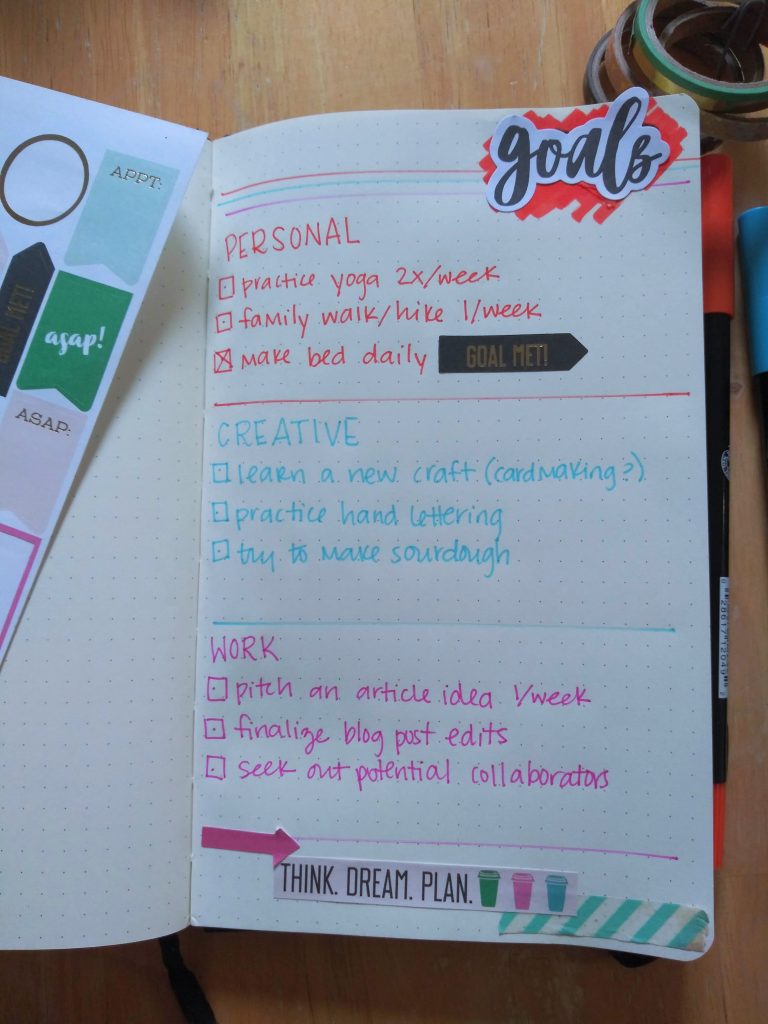
What’s A “Bujo”?
A bullet journal (or bujo, for short) is a way of organizing schedules and lists developed by designer Ryder Carroll. While you can use pretty much any type of notebook, you typically use a bound journal with numbered and dotted pages. Perhaps you’ve seen Instagram accounts and Pinterest boards dedicated to brightly colored and intricately designed lists and schedules and wondered, Who the heck has time for that?! The beauty of bullet journaling is that you can go as simple or complex as you desire!
Getting Started
Usually on Sunday evenings or Mondays while my daughter naps, I will pull out all my supplies and map out my week. If I’m pressed for time or just want a bare bones look, I keep it simple.
Here are a few of my essentials:
- Dotted journal (This is my favorite)
- Pilot G-2 0.38 pen
- Pencil
- Eraser
- Ruler
- Broad and medium tip markers
- Colorful fine point pens
- Washi tape and themed stickers
- White Out
Setting Things Up
Either the first few or last few pages are typically reserved for an index where you keep a running table of contents so you can quickly find what you’re looking for. (I also use tabs to keep handy lists and logs accessible.) Here’s where you can set up a key for your journal; this is a great way to shorthand information and distinguish tasks from events.
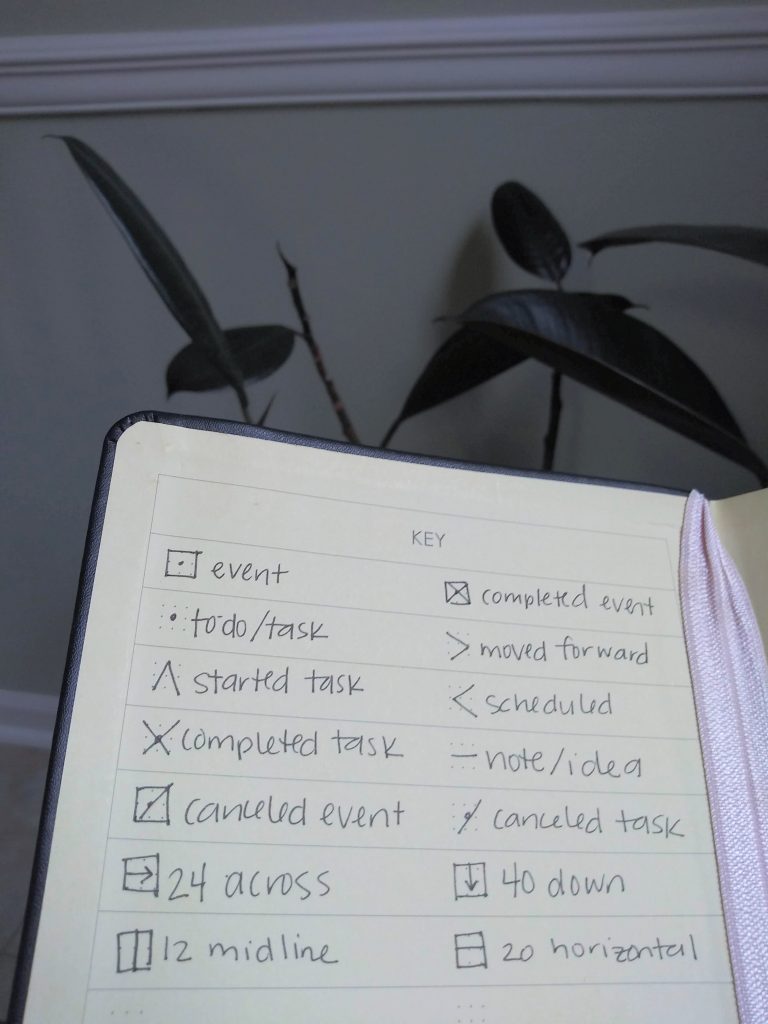
I typically start off each month with a similar setup, or “spread” — I create a two-page calendar with my goals, events/appointments, tasks, and a list of things coming up. Generally, I like my theme and color scheme to reflect the month in some way, but it really depends on how much time I have (or when the toddler rouses!).
Keeping Track and Logging Habits
I keep a daily log of things I’m grateful for, or particular high points of my day. This has been one of my favorite aspects of bullet journaling, as it makes me have at least one moment of mindfully reflecting on my day and picking out the parts that made me smile. Especially in these — say it with me — “uncertain times,” it’s so helpful to look back and see how much joy a coffee with a friend or backyard wine night can bring.
I also keep a monthly list of ideas for home education with our daughter. We haven’t made a hard decision about formal schooling for her, but for now I lean into a lot of play-centered, child-led traditions, with our own twists. I list out books we can read, crafts, recipes we can make, games and songs to learn, and places we can go for nature walks, library story times, and other outings.
Example Spreads
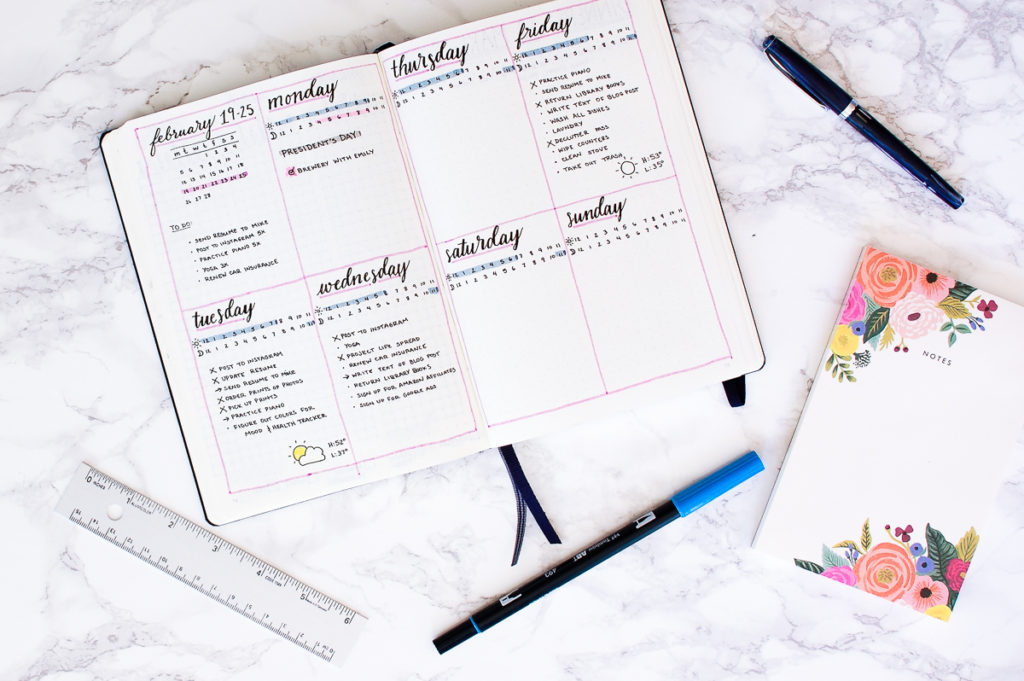
Each week I use a two-page quadrant method that essentially acts as eight sections where I can list out plans for each day, tasks to accomplish for the week, as well as forecast what’s coming up. This system helps me keep up with all the appointments, chores, deadlines, and events for the week at a quick glance. Also, the act of writing things down helps me cement the memory, and so even when my bujo isn’t in reach, I can visualize what and where I have a note or reminder written.
Other Ideas
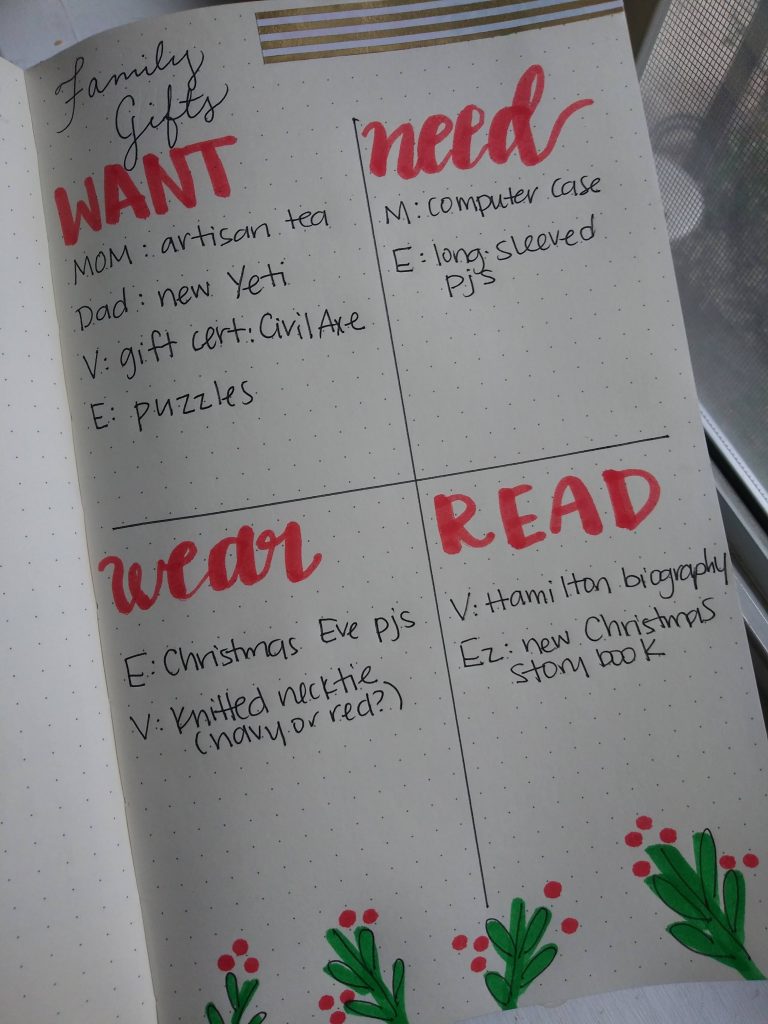
- Christmas List — keep track of what you’ve already got stowed away and what you’ll be asking Santa for.
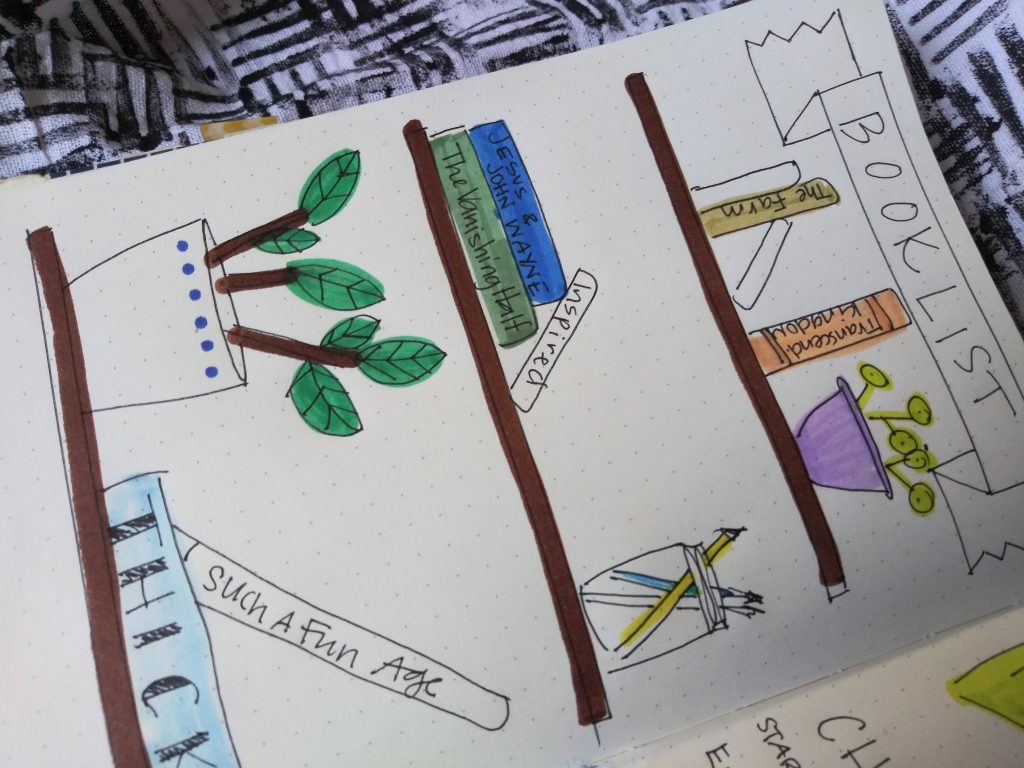
- Books to Read — Seeing the list of things I want to read helps motivate me to finish the books I’ve started!
- Brain dump (Schedule, to do, feeling, thoughts) — especially great for brain fog.
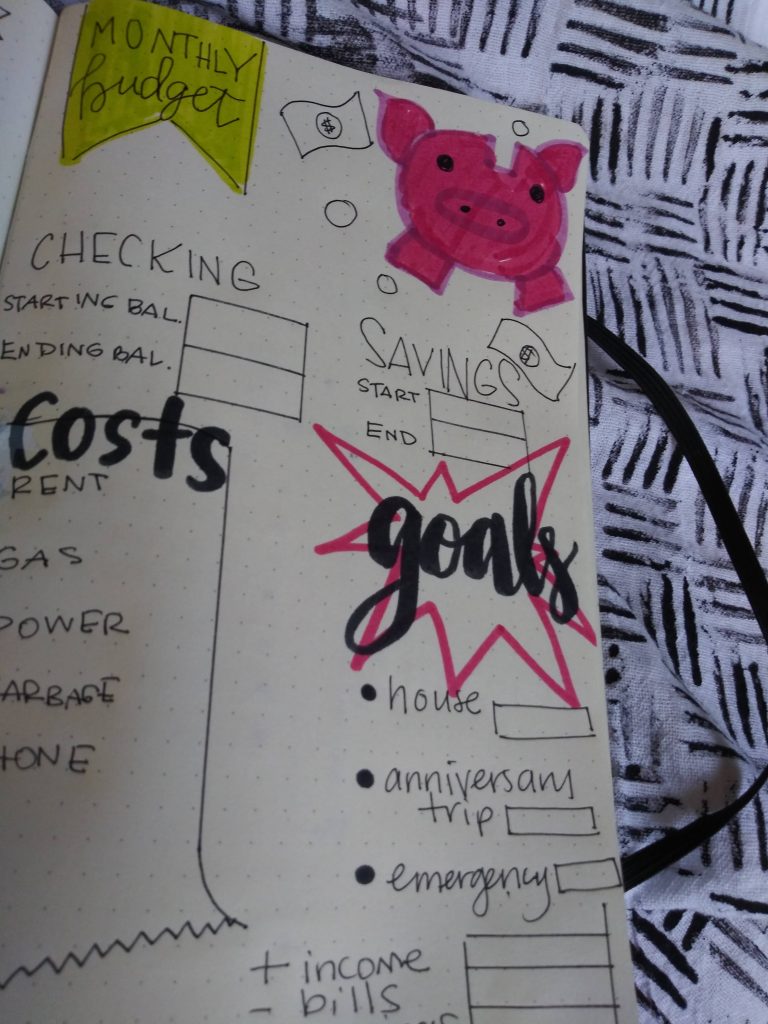
- Budgeting — Okay, so maybe not as fun, but definitely important to keep track of things in a easily accessible way.
- Mood log — especially great for reporting back to mental health professionals and maintaining awareness of patterns in mood and behavior.
TL:DR
Bullet journaling can be a useful tool for organizing personal, professional, and family life. In a year where nothing seems permanent, having a planner that gives me maximum flexibility has been so helpful.
PROS
- Entirely customizable
- No restrictive pre-labeled dates or times
- Durable
- Helps track concrete goals
CONS
- Takes time to set up
- Still have to remember to use it
- Another thing to keep up with
- Doesn’t sync with your phone
So, have I convinced you? Or have you already been bullet journaling? Sound off in the comments!











